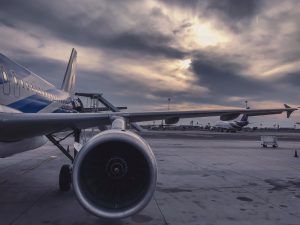 If you look at the back of an airplane’s tail, you may notice a small hole in the center of it. While not found in all airplanes, most commercial airplanes have this hole in their tail. However, unless you’re familiar with aviation mechanics, you might be wondering what purpose it serves. Well, there’s a good reason why so many commercial airplanes have a hole in their tail, which we’re going to explain in this blog post.
If you look at the back of an airplane’s tail, you may notice a small hole in the center of it. While not found in all airplanes, most commercial airplanes have this hole in their tail. However, unless you’re familiar with aviation mechanics, you might be wondering what purpose it serves. Well, there’s a good reason why so many commercial airplanes have a hole in their tail, which we’re going to explain in this blog post.
Auxiliary Power Unit
The small hole you see on the back of airplane tails is part of the auxiliary power unit. Like other auxiliary power units, it’s designed to produce power for airplanes. With that said, it doesn’t actually help airplanes produce propulsion. Rather, the auxiliary power unit is used to power electronic systems when airplanes are on the tarmac.
A typical commercial airplane’s auxiliary power unit produces 155 volts of alternating current (AC) at 400 Hz, whereas smaller airplanes have auxiliary power units that produce 28 volts of direct current (DC) electricity. Regardless, the purpose of the auxiliary power unit, as well as the tail hole in which it’s housed, is to produce power for an airplane’s electrical systems while the airplane is still on the runway.
When an airplane is on the runway, the auxiliary power unit is activated to power various electrical systems, including lights, navigation controls, heating or air conditioning and more. The auxiliary power unit doesn’t provide complete power to airplanes. Once the airplane’s engines are turned on, the auxiliary power unit is disabled. It’s only reactivated when the airplane lands at its destination.
You can think of an auxiliary power unit as a miniature combustion engine — just like the other engines used in commercial jets. It burns fuel to produce power, and this power is sent to the airplane’s electrical systems. Auxiliary power units aren’t a new phenomenon. They’ve actually been around for over a century, with some of the first auxiliary power units dating back to World War I aircraft. Since then, they’ve become a common component in commercial airplanes. No auxiliary power unit produces or helps with propulsion. Instead, they are responsible for producing power for an airplane’s electrical systems
To recap, the small hole you see on the back of airplane tails contains the auxiliary power unit. It’s responsible for providing power for an airplane’s electrical systems while the airplane is still on the runway. If an airplane is on the runway, it will likely use the auxiliary power unit to power many of its electrical systems.,



